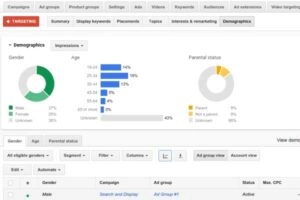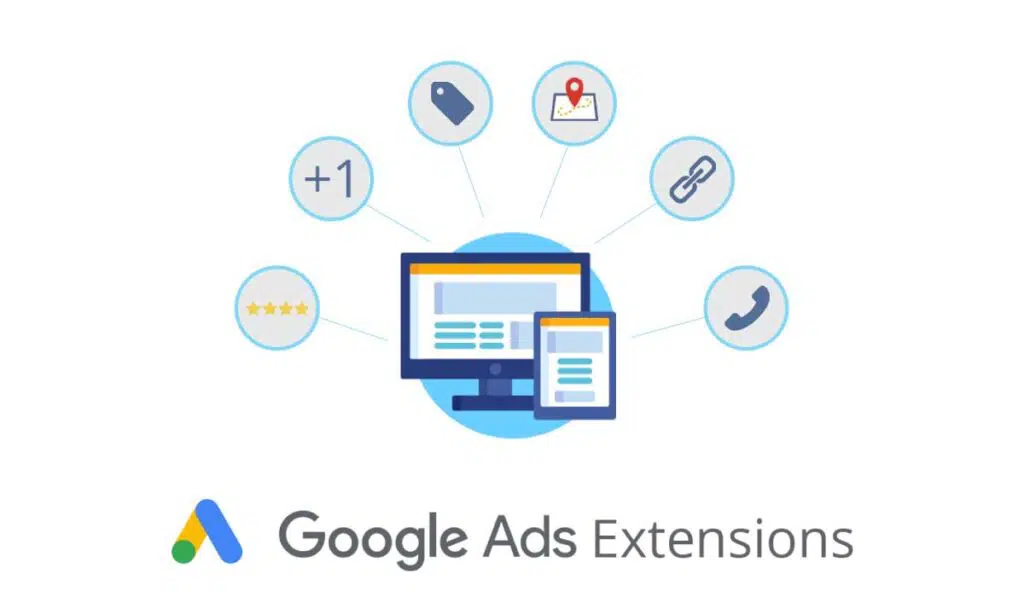Google has recently announced some very welcoming changes to their ad extensions, in an effort to improve the overall ad management experience for advertisers. In case you didn’t know, ad extensions are simply additional information about your business displayed in your search ads, such as your business address or telephone number. The new updates pertain to the callout, sitelink, and structured snippet extensions. An expert SEO company explains everything below:
1.Display Automated and Manual Extensions Simultaneously:
Google Ads includes a nifty feature known as Automated Extensions. When you use it, Google will create some extensions by itself for your search ads. The ad platform chooses the extensions that would most likely deliver better results for your campaign.

In the past, automated extensions such as dynamic sitelinks, dynamic callouts, and dynamic structed snippets cannot be displayed alongside manual extensions in the ads. For instance, when you create two manual ad extensions, only those will be eligible to be displayed in your ads. However, that’s changing.
The official Ads Liaison for Google Ads, Ginny Marvin has revealed that advertisers will soon be able to show both automated extensions and manual extensions in their ads at the same time. This update will be activated in mid-March 2022. As mentioned earlier, the following extensions will be eligible for this update:
- Sitelinks
- Callouts
- Structured Snippets
One of the biggest benefits of this update is your ads taking up more real estate in the search results. And that means a greater chance for users to view your ads. If effective enough, your search ads with extensions – alongside SEO – should help attract more customers than ever before.
2.Updates to Automated Extensions Reporting:

Besides offering a better opportunity to display automated extensions in your ads, Google has announced some changes in reporting as well. Once the new update goes into effect, users should be able to view reporting for automated extensions at an individual level in the extensions page. This should allow you to easily manage your ad campaigns moving forward.
What this means is that you will be able to either pause or remove automated extensions at an individual level. Even better, Google Ads will help you to easily distinguish between the extensions you added manually and those created automatically by Google. In the table view, you will soon be able to see “Automatically Created” mentioned right next to automated extensions.
3.Display Extensions Created at a Higher Level:

When you create ad extensions such as sitelinks, callouts, or structured snippets, you get to do that at the ad group, campaign, or account level. So far, when you create an extension at the granular level, you wouldn’t be able to display other extensions created at higher levels. For instance, if you create a callout extension at the ad group level, callouts in the campaign level will be ineligible to serve. But, the forthcoming update is changing this too.
Starting March, extensions in the higher levels – such as campaign and account levels – can be displayed if Google Ads thinks it can improve your ad performance. Google’s machine learning algorithm will pick the best extensions to make your ads more appealing to your target audience.
Google advises that you review all the extensions you have created across different levels before the update rolls out. “To prepare for this change, we recommend that you consolidate extensions to a level that makes sense for your account and ensure that they’re relevant for any subsequent levels.”
These are some great changes that can elevate your ad performance overall. Ad extensions, if used well, have only improved the results of ad campaigns. According to Google, ad extensions sometimes lead to a 20% increase in clickthrough rate when there’s four sitelinks displayed in ads. Once these newly announced updates go live, it is only going to get better. Pair this with a good SEO strategy, and you are destined to win!
Why Use Ad Extensions?
Some advertisers don’t pay much attention to ad extensions, but there are many benefits to using them. Ad extensions allow you to effectively communicate with customers by providing more information about your business and the service or product you offer.
- They Improve Conversions: Ad extensions aren’t just attractive to people, they also help improve your click-through rate. According to Google, ad extensions often lead to a better user experience and improved click-through rates. In addition, they can provide important information at a glance, allowing users to quickly decide whether or not they want to click on your ad. This ultimately helps boost conversion rates for your business.
- Better Ad Rank: Research has shown that ads with extensions tend to display higher in SERPs than those without. When you make use of ad extensions, such as reviews, Google may pull up or push down your ad based on what is most relevant for searchers.
- Minimise Costs: It’s easy to get caught up in a bidding war, and at first it may seem like your ads are getting more clicks. The truth is that you could be overpaying for those clicks if you aren’t careful. With ad extensions, you can reduce costs on your campaigns and boost results with minimal effort. If you’re not sure how to do that, it is ideal to work with a certified ad agency.
If you need assistance with your Google Ads campaign, get in touch with the SEO consultants today.




 '
'